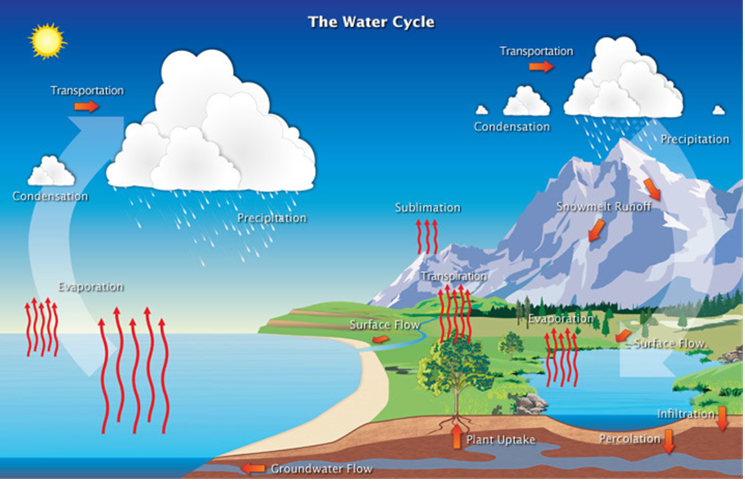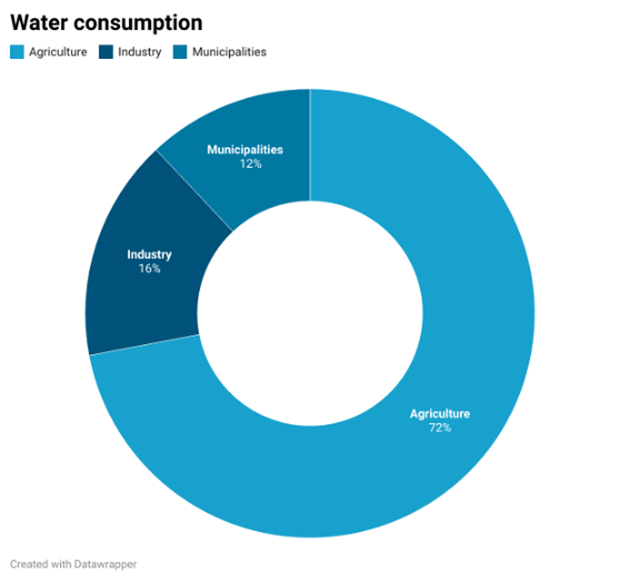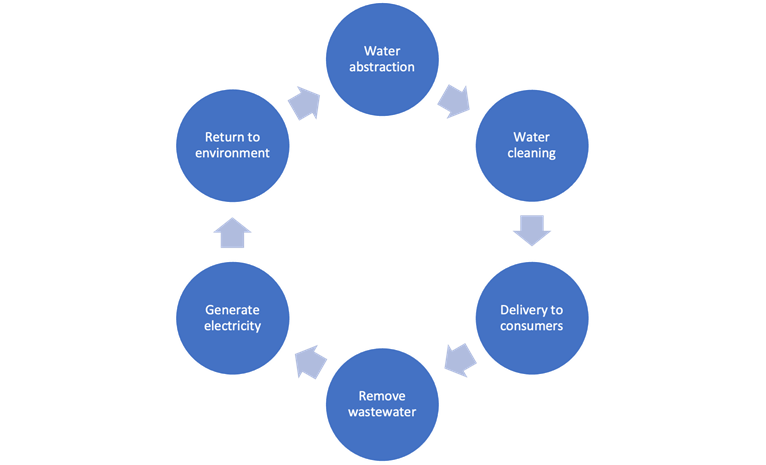Why Europe’s time to investment in water security is now
Water is widely recognized as the source of life, a fact underscored by scientists' search for it on distant planets as evidence of potential extraterrestrial life. However, the critical role and value of water on Earth are often underestimated. With significant socio-economic dependencies on water, coupled with rising demand and the financial repercussions of extreme weather events, the concept of 'water security' is finally gaining traction in European countries, thanks to heightened awareness of climate change. This increased focus is spurring profitable investment opportunities, as well as an upsurge in innovative technologies and policies.
The source of water
Water comes in many forms, but only freshwater is accessible and usable for human use. The total raw water on earth dwarfs reliable and accessible water, with only 0.000063% being surface freshwater. Luckily, the hydrological cycle makes water a renewable resource, connecting the immense potential of all the raw water to the valuable surface freshwater. Following figure provides a schematic of the connection of water systems.

Hydrological cycle (source: Image courtesy NOAA National Weather Service Jetstream)
Climate change
Climate change can have a lasting and potentially irreversible effect on hydrological processes. The source of water can become scarce or unpredictable due to some of the following impacts:
- Glacier reduction: Rise in temperature influences the seasonality of water stream flows and recharge levels in basins that depend on glacial melt.
- Elevated evaporation and decreased transpiration in plants.
- Increased moisture retention increases global precipitation (rain) and changes monsoon patterns.
- More extreme weather events such as droughts, hurricanes and cyclones
Rising temperature due to climate change clearly has a compounding effect on water shortage risk; it elevates the demand and hinders the supply. Although climate change is a worldwide phenomenon, the effects of climate change on the water cycle are location specific. The northeastern part of Europe is expected to have an increase in water availability, while southwestern part is likely to experience decreases. Europe is finally realizing that the problem of great water shortage will soon reach their borders as well. With the elevated risk of water scarcity, important sectors like agriculture, industry and municipalities become endangered.

Distribution of main water consumers worldwide.
Another important aspect of water is its quality which socio-economic activities can reduce. In order to combat these difficult challenges regarding water, the European legislation adopted under the EU Water Framework Directive sets a regulatory framework that focusses on ‘Water security’. This describes a condition whereby water is available and accessible in sufficient quantity and quality to ensure sustainable livelihoods, health, socioeconomic development, and political stability. The OECD Council of Water therefore recommends maintaining acceptable levels of risk across four water threats:
- Risk of shortage: Insufficient water for environmental and socio-economic purposes.
- Risk of inadequate quality: Water is not of suitable quality for a particular purpose.
- Risk of excess: Overflow of the normal confines of a water system, or the destructive accumulation of water over areas that are not normally submerged.
- Risk of freshwater systems degradations: Surpassing the hydrological and biological capacities of surface and groundwater bodies.
To optimally capitalize on the value water, the regulatory framework insists on a sustainable usage cycle, taking all the 4 points above into account.

Optimal utility cycle of water
Another important step towards water security is the pricing. Technological innovations need funding. Water plans across the EU are now improving the profitability of water investments. Ranging from upgraded sewerage systems to the location of leakages, non-revenue water is reduced and income is increased, creating a healthier climate for further investments.
Time to invest
Many believe we are on the cusp of a burgeoning investment trend focused on enhancing water security. According to The State of Global Water Resources 2022, an increasing number of countries are allocating funds for research to comprehend water mechanisms more thoroughly. Publicly traded companies like Ekopak are also investing in water. They specialize in the design, manufacturing, and leasing of water recycling solutions, with their latest mission being to ease challenges associated with accessing water. Europe has the opportunity to significantly reduce the costs related to water issues caused by climate change while positioning itself as a frontrunner and leader in water security technologies. It appears that now is the time to invest in water.